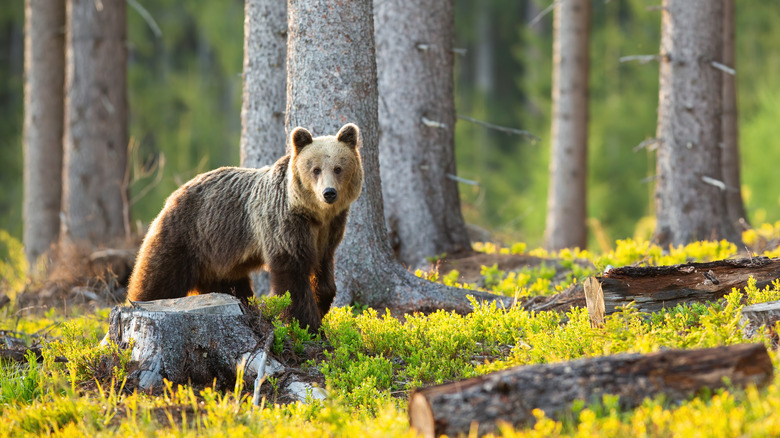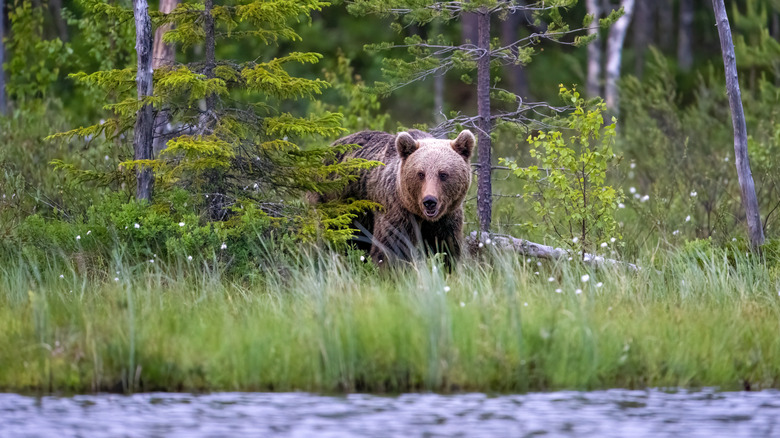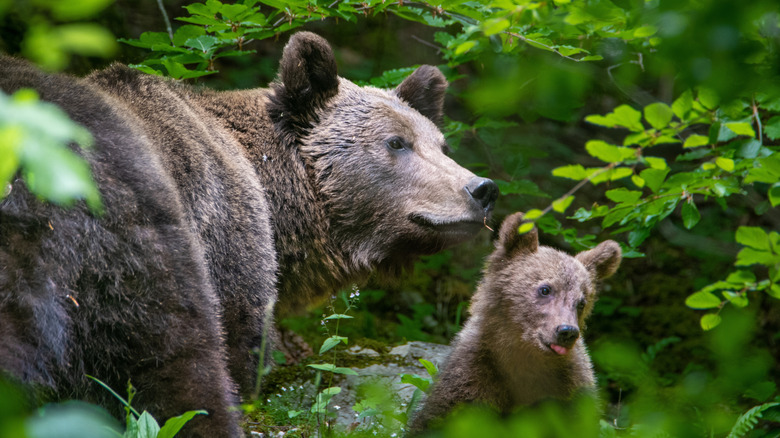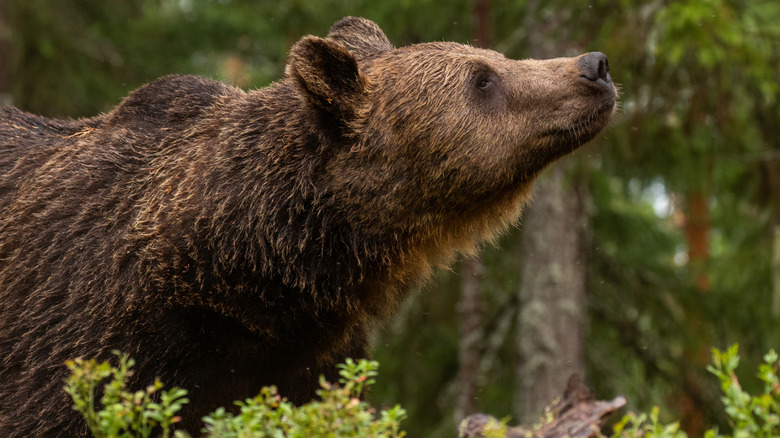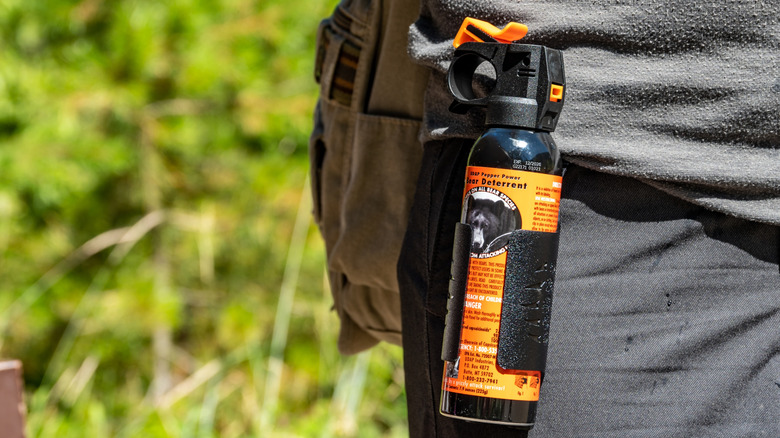Safety Tips To Know Before Your Next Bear Watching Adventure
Wildlife travel getaways are becoming increasingly popular around the world. In the U.S., one of the more popular experiences of this kind is bear watching. Those who are hoping to see bears in their natural habitat have no shortage of options, including numerous national parks for bear watching. However, while viewing these majestic animals can be an exhilarating experience, it is important to keep in mind that such excursions place you in the same area as dangerous types of bears. With that in mind, there are safety tips to know before your next bear watching adventure.
Even though the goal on a bear watching trip is to see bears, it is important to do so without putting yourself, others, or the bears in harm's' way. After all, not only is the popularity of bear watching increasing, the number of bear attacks is on the rise as well. So, there are a handful of precautions you should follow to make sure bears are alerted to your presence, have the ability to leave the area if they so choose, and do not feel threatened. Otherwise, you could be putting yourself at risk of an aggressive bear charge or, even worse, being attacked by a bear.
Don't surprise or startle a bear
On the surface, this would appear to be somewhat of a catch-22. Making noise to avoid bears is one of the most common tips for safe outdoor adventures in bear territory. This is because bears, like most wild animals, tend to avoid humans. So, playing a radio, using noise makers, equipment rattling as it moves, and even casual conversations can be enough to help you avoid a bear encounter. However, on a bear watching excursion, the idea is to actually see the bears, not have them flee before they are within sight.
However, it is still not a good idea to sneak up on a bear, as startling bears — especially those with cubs — can easily result in an aggressive encounter. So, you need to both be aware of your surroundings and make enough noise to alert nearby bears to your presence. This can be as simple as clapping your hands every few seconds or having a conversation in a normal tone of voice as you move along the trail. It is also a good idea to contain your bear watching efforts to areas where you have a line of sight for a good distance. This will allow both you and the bear to spot each other well before you come within the danger zone.
Always stay a safe distance away from bears
Once a bear is sighted, it is best to stay a safe distance away and make sure the bear has the ability to move away or leave the area if it so chooses. The proper protocol for safe and ethical wildlife viewing is to stay at least 100 yards away. This rule of thumb is fairly easy to follow if you just remember to leave the length of a football field between you and the bear. If you find yourself closer than this, slowly move back while keeping your eyes on the bear.
While this may seem to be a profound distance for wildlife viewing, bears are big animals and can be seen with the naked eye from far away and further. They are also fast animals, capable of running 30 to 35 miles an hour. A bear can cover that distance in less than six seconds. So, this 100 yard distance is a necessary buffer zone to allow for reaction time if the bear does become aggressive.
Additionally, giving a bear this amount of space allows them to remain undisturbed and continue to act naturally. This is actually a benefit to bear watchers, as observing their natural behavior is part of the allure of seeing them in the wild. If you feel you aren't able to see them well enough from this distance, you can always watch through the zoom lens of a camera or a pair of high-powered binoculars like the Nikon ACULON A211.
Never get between a bear's food or cubs
Another key to staying safe while viewing bears is to avoid getting between them and either their food or their cubs. If bears feel either threatened, they are likely to react aggressively and may even attack. The simplest way to avoid such a dangerous situation is to be constantly aware of your surroundings while adventuring in bear territory.
Whether it is a dead deer carcass, berry field, or any other potential food source, you should avoid it or detour around it if at all possible. If you come across a dead animal carcass or pick up the scent of one, you should pay particular attention to other signs a bear may be nearby, such as scat, tracks, or paw marks. Additionally, you should avoid going any closer to the carcass. If you happen to be in an area where berries are found along the trails or bear watching areas, be sure to pay close attention for signs a bear may be near, do not venture deep into the berry patch, and make noise in order to prevent surprising any bears that may be feeding unseen.
When it comes to momma bears defending their cubs, that can result in an attack, especially when it comes to grizzly bears. This maternal instinct has played a role in more than half the recorded fatal attacks by grizzlies. While black bears are not as aggressive, they will still defend their cubs — or themselves — if they feel threatened. So, while bear cubs may look cute, if you see one, be sure to put plenty of distance between you and it while keeping an eye out or on the mother bear.
Avoid scents that attract bears
Bears have one of the best developed senses of smell on the planet. So, it is no surprise they rely heavily on their sniffers to help them locate potential food sources. To that end, in order to ensure a safe outing in bear territory, it is essential that you avoid carrying or using scents that may attract them. These things may include obvious items, such as food, but also things you may not suspect such as toothpaste, deodorant, and cologne or perfume.
With that in mind, be sure that whether you are hiking or camping, keep food properly stored at all times. This means having it sealed in an airtight container. The same goes for trash or food items that need to be discarded. Additionally, even if bears come near, do not feed them. Not only does this encourage bears to come dangerously close in order to get an easy meal, it causes bears to associate people with food, and lose their fear of being around humans.
It is also a good idea to avoid attracting bears with your own scent. This has less to do with your natural odor than what you may be doing to cover it. So, if you are heading into bear territory, do not wear cologne or perfume and avoid heavily scented soaps and deodorants, as these scents may attract bears. Additionally, you should store any toiletries in an airtight container.
Carry and know how to use bear spray
Even following proper bear watching protocol and following all safety precautions is not a guarantee you won't have an aggressive bear encounter. Unless you are adventuring in a national park where bear spray is banned, you should always carry and know how to use bear spray when spending time in bear territory.
Bear spray is essentially highly concentrated pepper oil which is meant to irritate the eyes, throat, and nasal passages of bears. This non-lethal concoction is designed to provide you enough time to escape a charging bear. Most bear sprays, such as the SABRE Frontiersman, have an effective range of around 30 feet. Although bear spray should be a last resort, if an aggressive bear charges within this distance, you shouldn't hesitate to discharge a cloud of bear spray in its direction.
It is important to understand that bear spray is ejected from the canister in a funnel that forms a cloud, not a concentrated stream that is meant to be directed at a target. The idea is the charging bear will run into the cloud of spray, getting it in its eyes and inhaling it. So, if you need to utilize bear spray to stop a charging bear, simply grasp the canister with both hands, point it in a slightly downward angle towards its head, and spray a short burst. If the bear continues to charge, spray a second burst. Each burst should be two to three seconds long.
